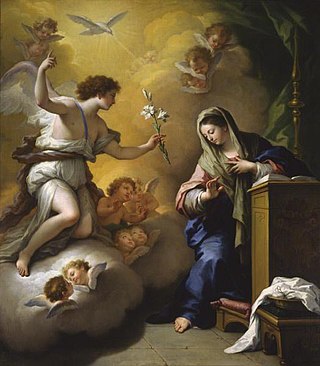
Archangels are the second-lowest rank of angel in the Christian hierarchy of angels, put forward by Pseudo-Dionysius the Areopagite in the 5th or 6th century in his book De Coelesti Hierarchia. The word "archangel" itself is usually associated with the Abrahamic religions, but beings that are very similar to archangels are found in a number of other religious traditions.
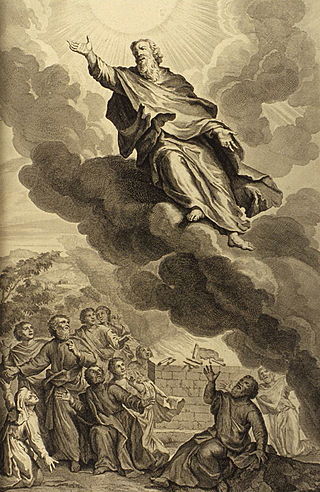
Enoch is a biblical figure and patriarch prior to Noah's flood, and the son of Jared and father of Methuselah. He was of the Antediluvian period in the Hebrew Bible.

Metatron, or Matatron, is an angel in Judaism, Christianity, and Islam mentioned three times in the Talmud, in a few brief passages in the Aggadah, and in mystical Kabbalistic texts within Rabbinic literature. The figure forms one of the traces for the presence of dualist proclivities in the otherwise monotheistic visions of both the Tanakh and later Christian doctrine. In the Jewish kabbalistic tradition, he is sometimes portrayed as serving as the celestial scribe. The name Metatron is not mentioned in the Torah or the Bible, and how the name originated is a matter of debate. In Islamic tradition, he is also known as Mīṭaṭrūn, the angel of the veil.
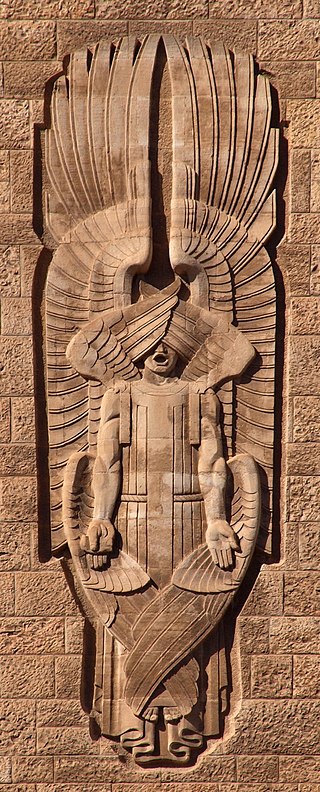
A seraph is a celestial or heavenly being originating in Ancient Judaism. The term plays a role in subsequent Judaism, Christianity, and Islam.

Samael is an archangel in Talmudic and post-Talmudic lore; a figure who is the accuser or adversary, seducer, and destroyer.

The Messiah in Judaism is a savior and liberator figure in Jewish eschatology who is believed to be the future redeemer of the Jews. The concept of messianism originated in Judaism, and in the Hebrew Bible a messiah is a king or High Priest of Israel traditionally anointed with holy anointing oil. However, messiahs were not exclusively Jewish, as the Hebrew Bible refers to Cyrus the Great, Achaemenid Emperor, as a messiah for his decree to rebuild the Jerusalem Temple.

Fallen angels are angels who were expelled from Heaven. The literal term "fallen angel" does not appear in any Abrahamic religious texts, but is used to describe angels cast out of heaven or angels who sinned. Such angels often tempt humans to sin.

The Book of Enoch is an ancient Hebrew apocalyptic religious text, ascribed by tradition to the patriarch Enoch who was the father of Methuselah and the great-grandfather of Noah. The Book of Enoch contains unique material on the origins of demons and Nephilim, why some angels fell from heaven, an explanation of why the Genesis flood was morally necessary, and a prophetic exposition of the thousand-year reign of the Messiah. Three books are traditionally attributed to Enoch, including the distinct works 2 Enoch and 3 Enoch. None of the three books are considered to be canonical scripture by the majority of Jewish or Christian church bodies.

Jacob's Ladder is a ladder leading to heaven that was featured in a dream the biblical Patriarch Jacob had during his flight from his brother Esau in the Book of Genesis.
Sariel is a angel mainly from Judaic tradition. Other possible versions of his name are Suriel, Suriyel, Seriel, Sauriel, Saraqael, Sarakiel, Suruel, Surufel, and Souriel.

In the Book of Ezekiel in the Hebrew Bible, New Jerusalem is Ezekiel's prophetic vision of a city centered on the rebuilt Holy Temple, the Third Temple, to be established in Jerusalem, which would be the capital of the Messianic Kingdom, the meeting place of the twelve tribes of Israel, during the Messianic era. The prophecy is recorded by Ezekiel as having been received on Yom Kippur of the year 3372 of the Hebrew calendar.

A Watcher is a type of biblical angel. The word occurs in both plural and singular forms in the Book of Daniel, where reference is made to the holiness of the beings. The apocryphal Books of Enoch refer to both good and bad Watchers, with a primary focus on the rebellious ones.

Barachiel, also known as Barakel, is one of the Archangels in Judaism, as well as Eastern Orthodox tradition. He is the Archangel of Blessings.

The concept of Seven Archangels is found in some works of early Jewish literature and in Christianity. In those texts, they are referenced as the angels who serve God directly.

Entering heaven alive is a belief held in various religions. Since death is the normal end to an individual's life on Earth and the beginning of afterlife, entering heaven without dying first is considered exceptional and usually a sign of a deity's special recognition of the individual's piety.

The Seven Seals of God from the Bible's Book of Revelation are the seven symbolic seals that secure the book or scroll that John of Patmos saw in an apocalyptic vision. The opening of the seals of the document occurs in Rev Ch 5–8 and marks the Second Coming of the Christ and the beginning of The Apocalypse/Revelation. Upon the Lamb of God/Lion of Judah opening a seal on the cover of the book/scroll, a judgment is released or an apocalyptic event occurs. The opening of the first four Seals releases the Four Horsemen, each with his own specific mission. The opening of the fifth Seal releases the cries of martyrs for the "Word/Wrath of God". The sixth Seal prompts plagues, storms and other cataclysmic events. The seventh Seal cues seven angelic trumpeters who in turn cue the seven bowl judgments and more cataclysmic events.
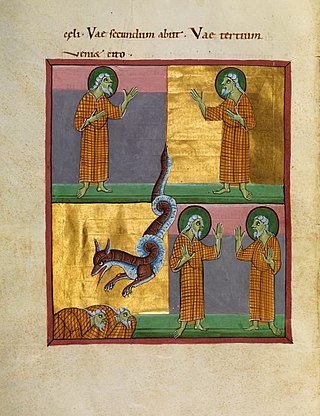
In the Book of Revelation, the two witnesses are two prophets who are mentioned in Revelation 11:1-14. Some Christians interpret this as two people, two groups of people, or two concepts. Some believe they are Enoch and Elijah, as in the Gospel of Nicodemus, since they are the only two that did not see death as required by the Scriptures, while others believe them to be Moses and Elijah because they appeared during the transfiguration of Jesus, or because Enoch was not Abraham's descendant. They have the power to shut the heavens (Elijah) and turn water into blood (Moses).
In several Abrahamic religions, the Third Heaven is a division of Heaven in religious cosmology. In some traditions it is considered the abode of God, and in others a lower level of Paradise, commonly one of seven.
In some Judeo-Christian traditions, the Angel of the Presence / Face or Angel of his presence / face refers to an entity variously considered angelic or else identified with God himself.
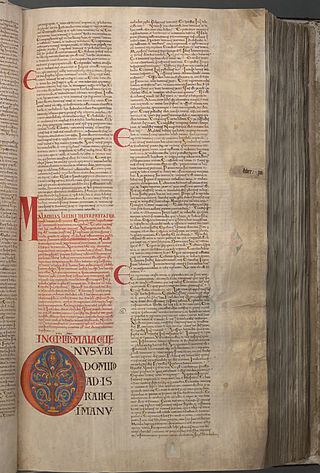
Malachi 4 is the fourth chapter of the Book of Malachi in the Hebrew Bible or the final chapter in the Old Testament of the Christian Bible. This book contains the prophecies attributed to the prophet Malachi, and is a part of the Book of the Twelve Minor Prophets.
















